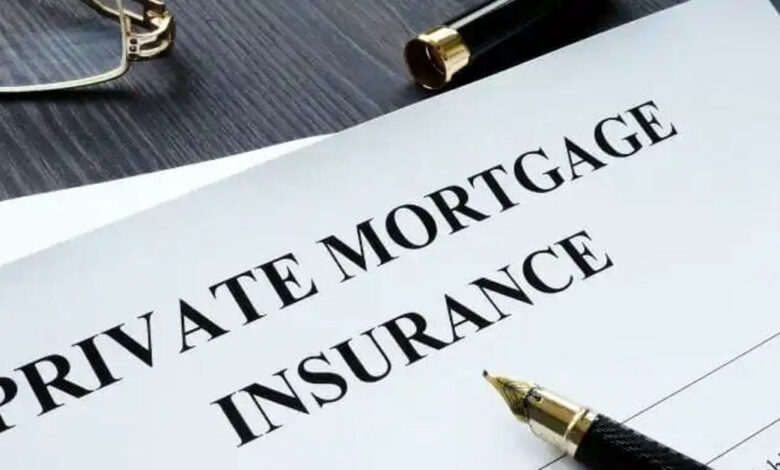httpsrealestatejot.infohow-to-get-private-mortgage-insurance: Your Guide to Understanding PMI

Buying a home is one of the most significant investments many people will make in their lives. However, navigating the mortgage process can be complicated, especially when it comes to down payments. If you’re planning to purchase a home with a down payment of less than 20%, you may encounter a requirement for httpsrealestatejot.infohow-to-get-private-mortgage-insurance (PMI). In this comprehensive guide, we will explore what PMI is, why it’s necessary, and how you can secure it when buying a home. Let’s dive in!
What Is Private Mortgage Insurance (PMI)?
Understanding PMI
Private Mortgage Insurance (PMI) is a type of insurance that protects lenders in case a borrower defaults on their loan. When borrowers make a down payment of less than 20%, lenders view them as higher risk. PMI mitigates this risk by providing coverage to the lender if the borrower fails to repay the mortgage.
Why Is PMI Necessary?
Lenders typically require PMI to safeguard their investment when a borrower has a smaller down payment. It allows borrowers to purchase homes without saving a full 20% down payment, making homeownership more accessible. While PMI is an additional cost for borrowers, it opens the door to homeownership for those who might otherwise be unable to afford it.
How to Get Private Mortgage Insurance: A Step-by-Step Guide
Step 1: Identify the Home You Want
Before you can think about PMI, you need to identify the home you’re interested in purchasing. This involves researching neighborhoods, attending open houses, and narrowing down your options based on your budget and preferences.
Step 2: Calculate the Standard 20% Down Payment
Once you’ve identified a potential home, the next step is to calculate what a 20% down payment would be. This is crucial for understanding how much money you need upfront.
Example Calculation:
- If the home is priced at $300,000, multiply that by 0.2 (20%):
- $300,000 x 0.2 = $60,000
- In this case, you would need $60,000 as a down payment to avoid PMI.
Step 3: Determine Your Available Down Payment
Assess your finances to see how much you can afford to put down on the home. This amount might be less than 20%, which will likely lead to the requirement of PMI.
Step 4: Prepare for PMI Arrangements
If your down payment is less than 20%, your lender will initiate arrangements for PMI. This is generally part of the mortgage application process, so you don’t need to seek out a separate policy yourself.
Step 5: Understand PMI Costs
Before closing on the house, ask your lender for details about the PMI costs. The amount you pay for PMI can vary based on several factors, including:
- Your credit score
- The size of your down payment
- The total loan amount
Understanding these costs will help you budget accordingly and avoid any surprises at closing.
How PMI Affects Your Monthly Payments
Monthly PMI Premiums
PMI typically adds to your monthly mortgage payments. The cost of PMI can range from 0.3% to 1.5% of the original loan amount annually. To estimate your monthly PMI payment, you can use this simple formula:
Monthly PMI Payment = (Loan Amount x PMI Rate) / 12
Example:
- If your loan amount is $240,000 and your PMI rate is 0.5%, your monthly PMI would be:
- ($240,000 x 0.005) / 12 = $100
Overall Mortgage Payment
Your overall monthly mortgage payment will consist of the principal, interest, property taxes, homeowners insurance, and PMI. Be sure to consider all these components when calculating what you can afford.
When Does PMI End?
Automatic Termination
httpsrealestatejot.infohow-to-get-private-mortgage-insurance is not a lifelong requirement. Under the Homeowners Protection Act, lenders must automatically cancel PMI when your loan balance reaches 78% of the original home value, provided you are current on your payments.
Requesting Cancellation
You can also request the cancellation of PMI when your loan balance reaches 80% of the original value. To do this, you will likely need to provide documentation, such as an updated home appraisal or proof of payments.
Alternatives to PMI
1. 20% Down Payment
The most straightforward way to avoid PMI is to make a 20% down payment on your home. While this might take time to save up, it can save you money in the long run by eliminating PMI costs.
2. Lender-Paid Mortgage Insurance (LPMI)
Some lenders offer Lender-Paid Mortgage Insurance (LPMI), which allows you to avoid paying httpsrealestatejot.infohow-to-get-private-mortgage-insurance directly. Instead, the lender pays it on your behalf, but this usually comes with a higher interest rate on the loan.
3. Piggyback Loans
Another option is a piggyback loan, where you take out a httpsrealestatejot.infohow-to-get-private-mortgage-insurance to cover part of the down payment. For example, you might take out an 80/10/10 loan, where you get a first mortgage for 80%, a second mortgage for 10%, and make a 10% down payment. This method can help you avoid PMI.
The Pros and Cons of PMI
Pros
- Access to Homeownership: PMI allows you to purchase a home without a full 20% down payment, making homeownership more accessible.
- Potential Tax Deductions: In some cases, PMI premiums may be tax-deductible, depending on your financial situation.
Cons
- Additional Cost: PMI adds to your monthly expenses, which can make it harder to manage your budget.
- Not Beneficial for Homeowners: PMI primarily benefits lenders, as it protects their investment rather than providing any direct benefit to homeowners.
Conclusion
Understanding how to get httpsrealestatejot.infohow-to-get-private-mortgage-insurance (PMI) is crucial for anyone looking to purchase a home with less than a 20% down payment. While PMI may seem like an additional hurdle, it can also be a helpful tool that makes homeownership achievable for many. By following the steps outlined in this guide and understanding the ins and outs of PMI, you can navigate the mortgage process with confidence.
As you embark on your journey to homeownership, remember that having a solid plan and being informed will empower you to make the best financial decisions. Whether you decide to pay PMI or explore alternatives, taking control of your mortgage options will set you up for success in your new home.





